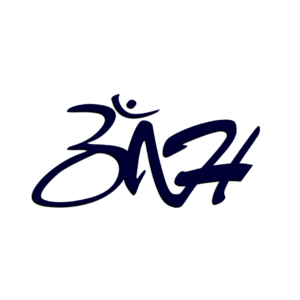In the vast tapestry of Hindu culture, there exist countless deities, each with a unique role and significance. Among them, the divine trio of Lord Brahma, Lord Vishnu, and Lord Shiva (also known as Mahesh) stands as one of the most revered and enigmatic triads in the pantheon. Together, they embody the cosmic cycle of creation, preservation, and destruction. In this blog, we will dive deep into the captivating stories and symbolism surrounding these three omnipotent beings.
Lord Brahma – The Creator:
Lord Brahma, the first member of the divine trinity, is often depicted with four heads, representing the four Vedas, and four arms that symbolize the four directions. It is believed that Lord Brahma is responsible for creating the universe, including all living and non-living things. According to Hindu Culture, he emerged from a lotus that sprouted from Lord Vishnu’s navel. Brahma’s creation is said to be the result of divine meditation, and his task is to populate the cosmos with beings.
Brahma’s creation, however, is not a one-time event. The universe undergoes a cycle of birth, existence, and dissolution, with Lord Brahma creating and re-creating it multiple times over aeons. His creative power is both a symbol of renewal and a reminder of the impermanence of all things.
Lord Vishnu – The Preserver:
Lord Vishnu, the second member of the trinity, is often portrayed as a calm, blue-skinned deity reclining on the cosmic serpent, Shesha. Vishnu’s role is to preserve and maintain the order of the universe. When chaos threatens to disrupt the cosmic balance, Vishnu incarnates as different avatars to protect dharma (righteousness) and restore order.
Some of the most famous avatars of Lord Vishnu include Lord Rama, Lord Krishna, and Lord Narasimha, each with a specific mission and message. Vishnu’s preservation is not just a physical act but also a spiritual one, signifying the preservation of moral and ethical values.
Lord Shiva (Mahesh) – The Destroyer:
Lord Shiva, the third and final member of the trinity, is a complex and multifaceted deity. He is often depicted as a yogi with ash smeared on his body, signifying his transcendence of material desires. Lord Shiva’s role is to bring about the dissolution of the universe, making way for a new cycle of creation. This destruction is not to be feared but rather seen as a transformative and purifying force.
Shiva’s dance, known as the Tandava, represents the rhythmic and cyclical nature of creation, preservation, and destruction. In his benevolent form, Shiva is regarded as the source of knowledge, art, and spirituality, offering solace and enlightenment to his devotees.
The Divine Dance of the Trinity:
The trinity of Lord Brahma, Lord Vishnu, and Lord Shiva represents a dynamic interplay of cosmic forces, highlighting the interconnectedness of creation, preservation, and destruction. Their stories and symbolism serve as a reminder that the universe is in a constant state of flux, and life’s cycles are an integral part of the grand design.
As we explore the stories of these divine beings, we discover not only the roles they play in the cosmos but also the profound lessons they impart to humanity. From Lord Brahma, we learn about the importance of creation and renewal. Lord Vishnu teaches us the significance of preserving righteousness and balance. Lord Shiva, in his enigmatic ways, reminds us of the inevitability of change and the transformative power of destruction.
The divine trinity of Lord Brahma, Lord Vishnu, and Lord Shiva captivates our hearts and minds with its deep symbolism, mystique, and timeless wisdom. Together, they guide us through the eternal cycles of creation, preservation, and destruction, offering insights into the nature of the universe and our place within it. In the intricate dance of life, these three deities stand as beacons of divine knowledge, inviting us to explore the profound depths of existence.








